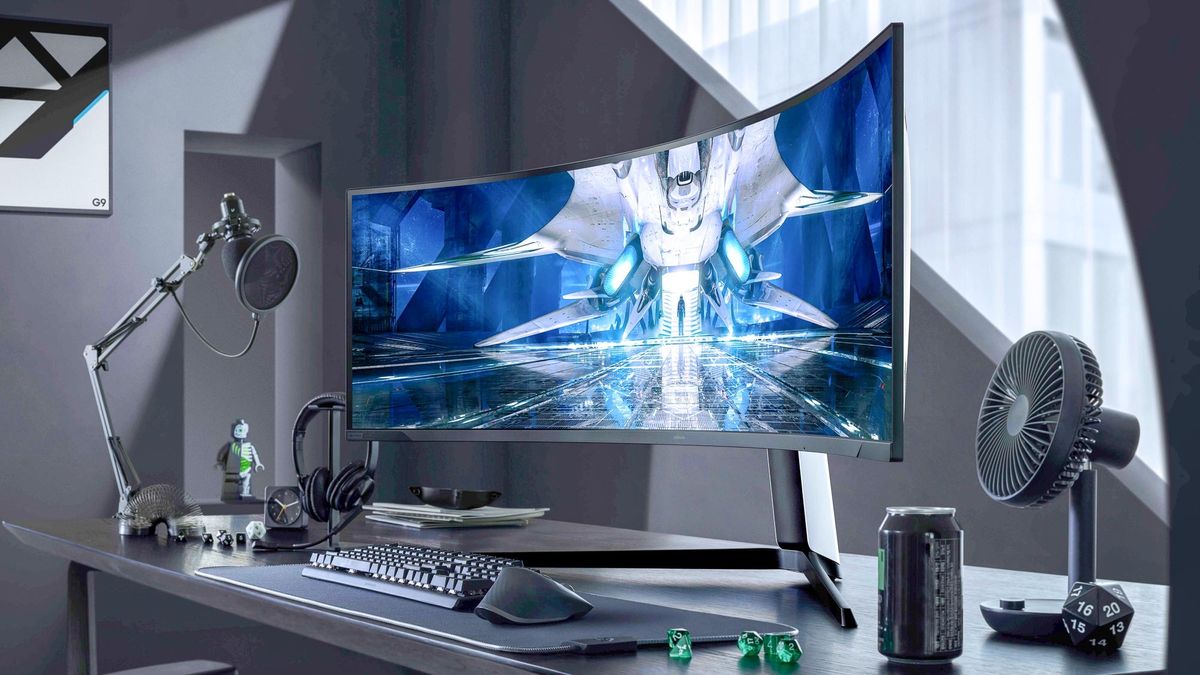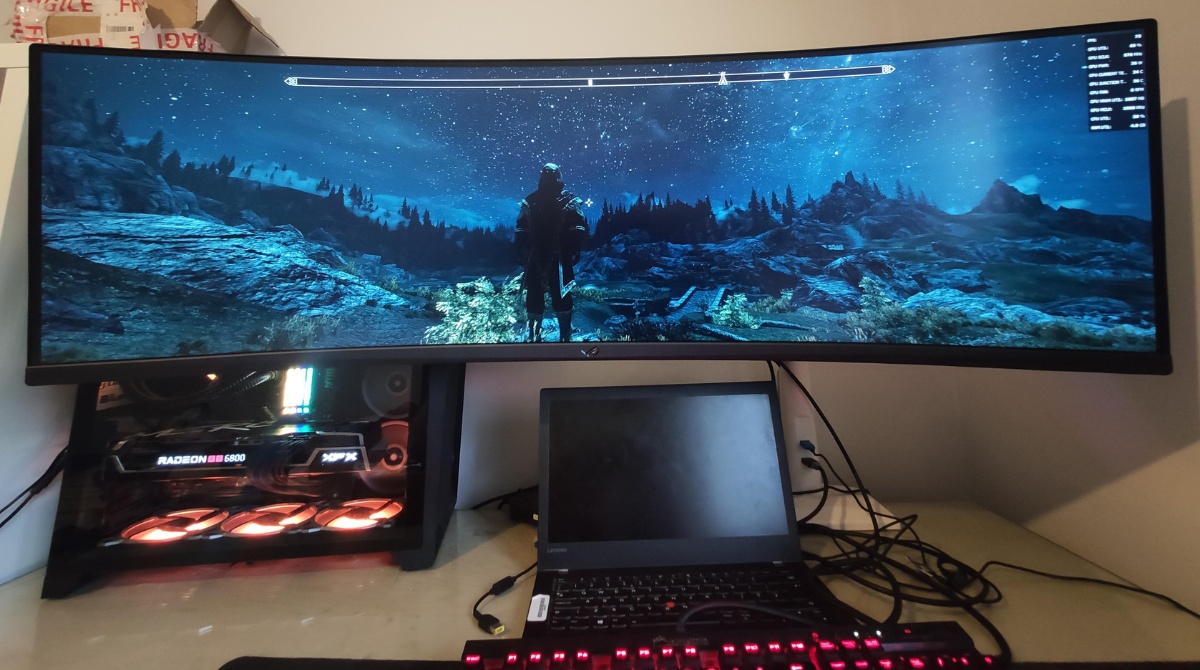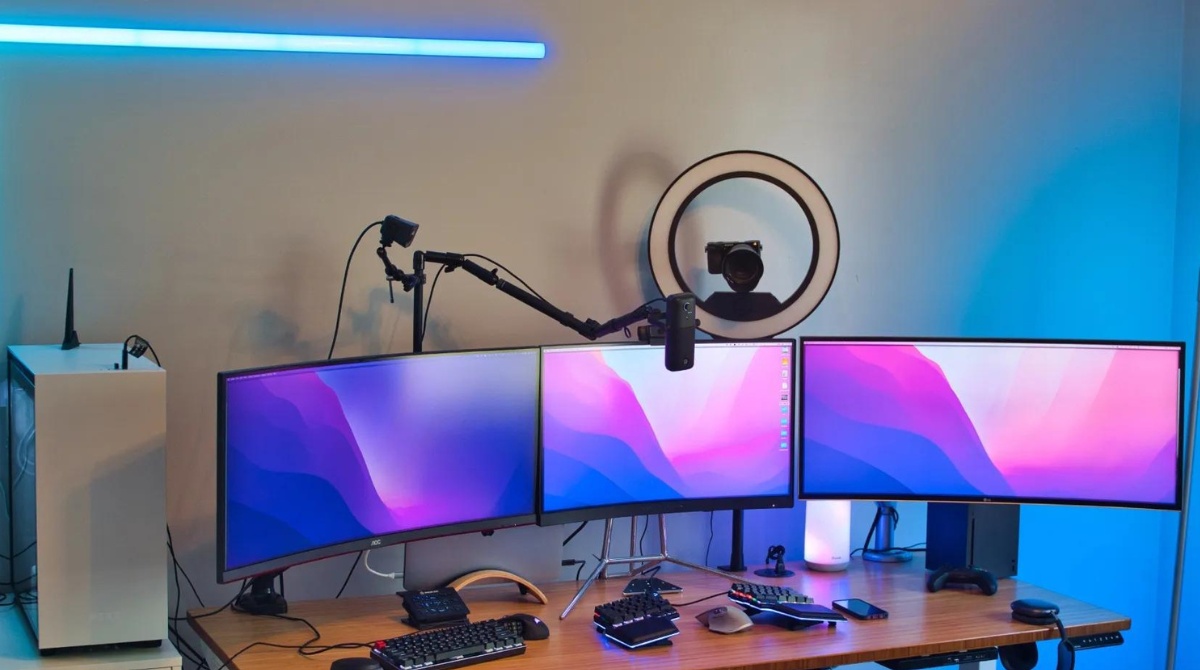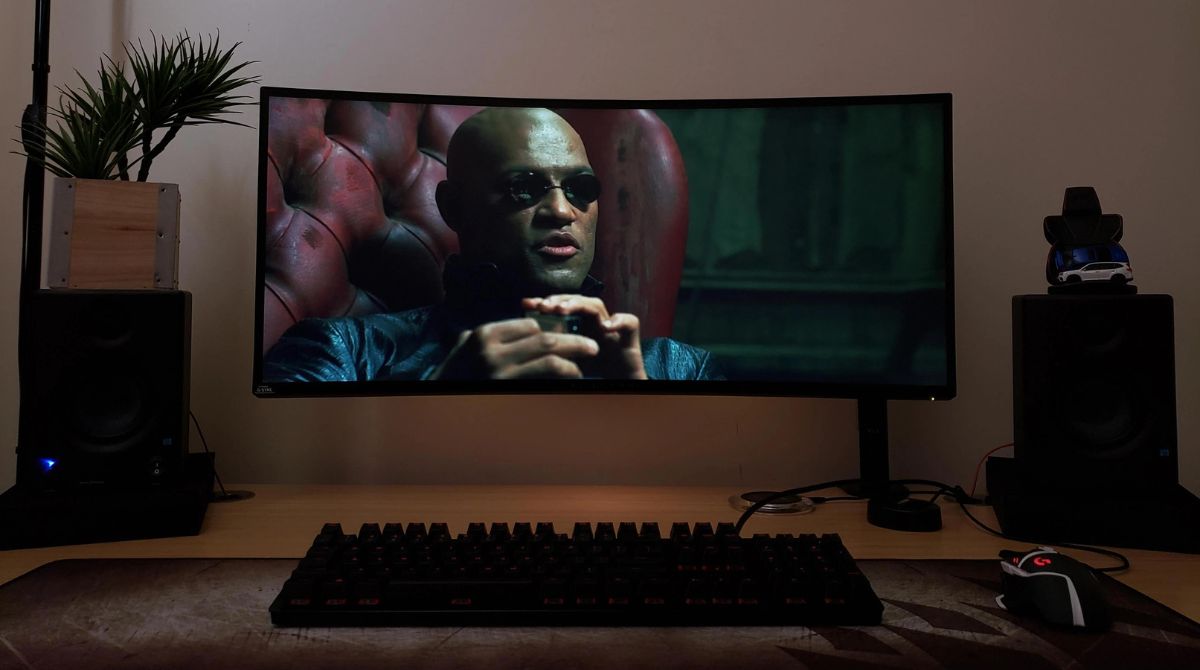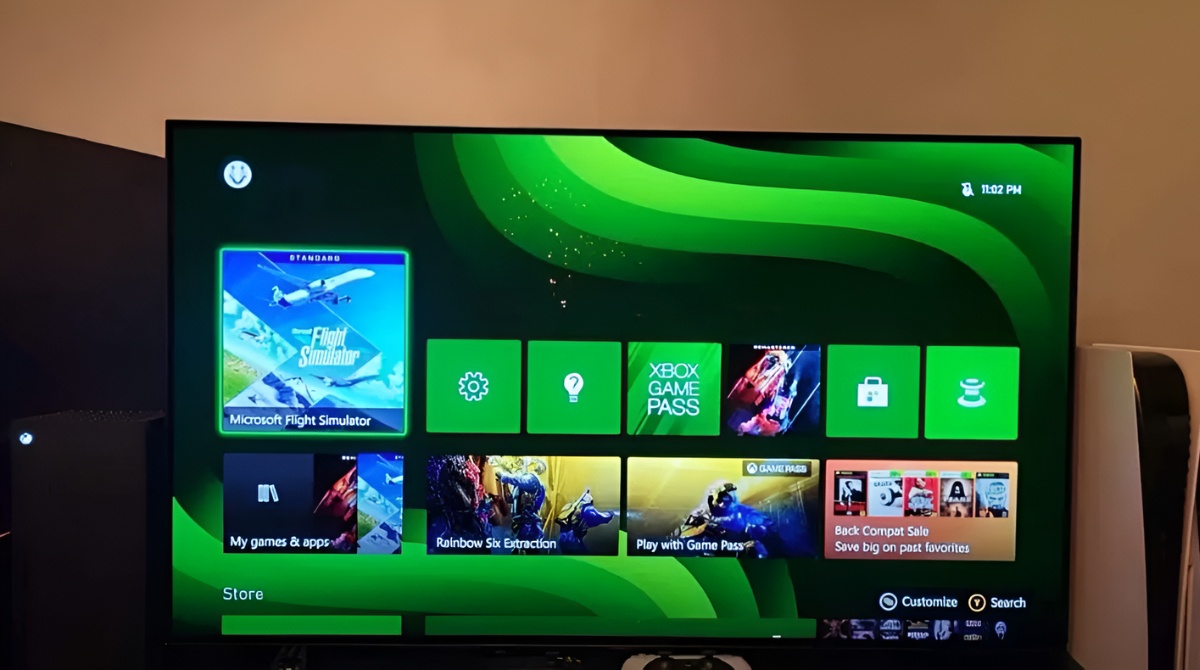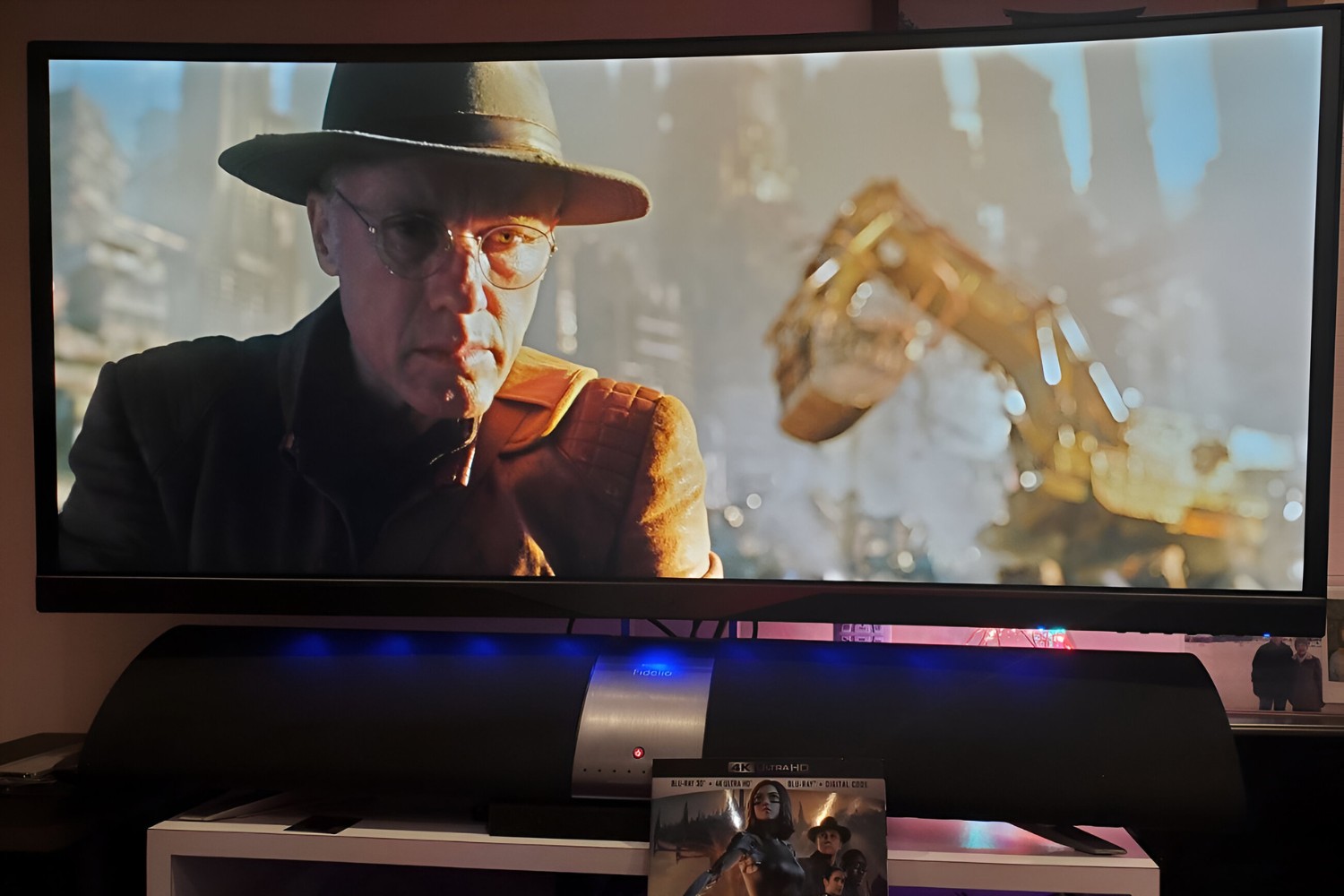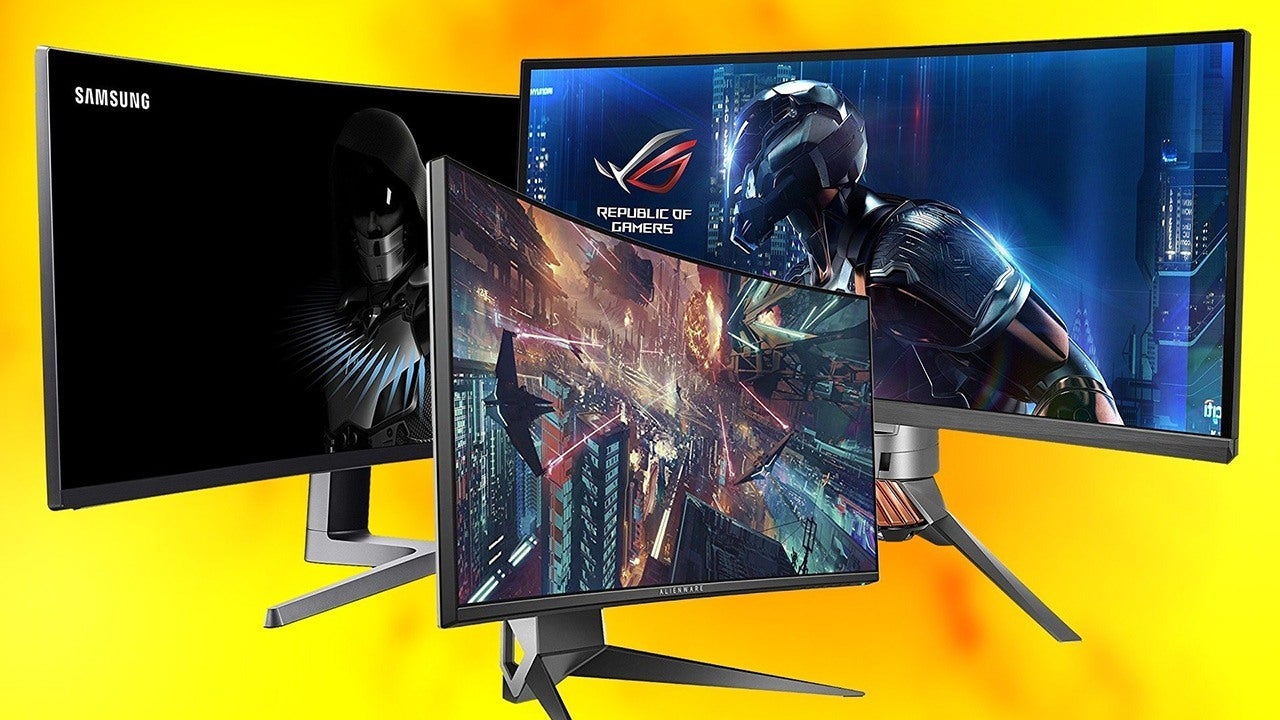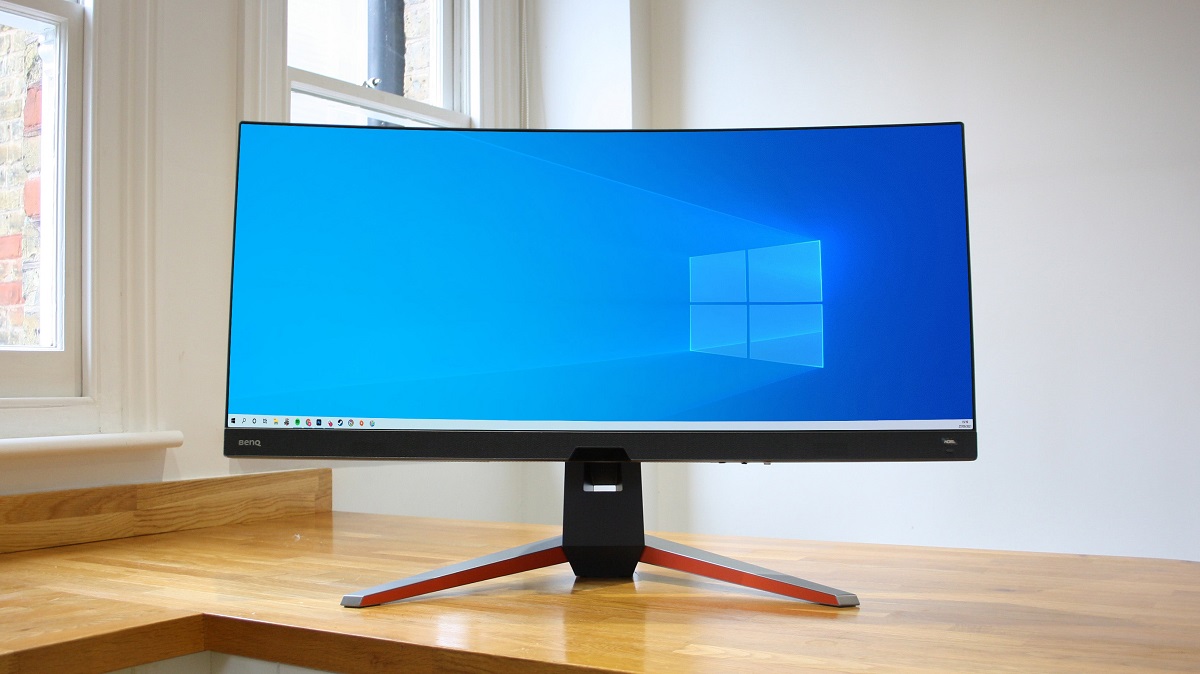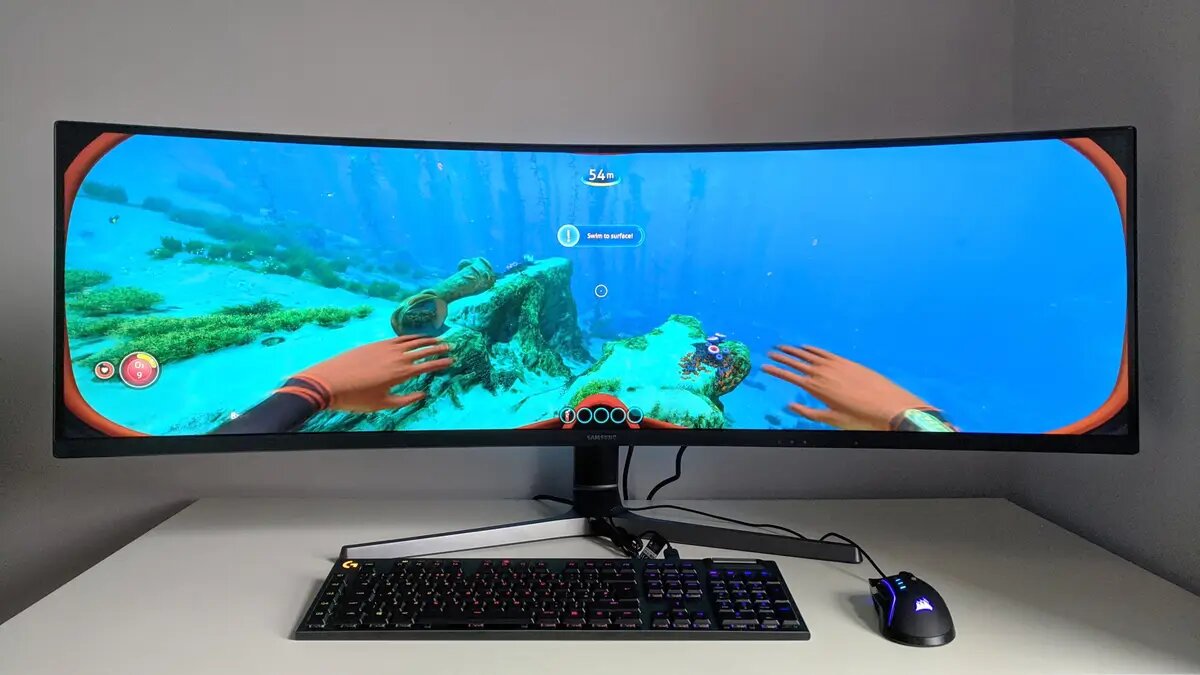Introduction
Welcome to the world of ultrawide monitors! With their expansive screen real estate and immersive display, ultrawide monitors have become increasingly popular among professionals, gamers, and multimedia enthusiasts. However, you may sometimes encounter a frustrating issue of black lines appearing on your ultrawide monitor when running at a 1080 resolution. These lines can disrupt your viewing experience and hinder the overall enjoyment of using your monitor.
In this article, we will delve into the reasons behind the appearance of these black lines on your ultrawide monitor and explore various troubleshooting techniques to get rid of them. We will discuss adjusting the display settings, updating graphics card drivers, optimizing resolution settings, and adjusting the refresh rate of your monitor.
Before we dive into the solutions, let’s understand why these black lines occur in the first place. Often, they are a result of mismatched resolutions or improper display settings. It’s essential to take appropriate measures to ensure that your monitor is set up correctly to avoid these unwanted black lines.
Now, let’s explore the reasons behind the appearance of these black lines and learn how to resolve them to enjoy a seamless and visually pleasing ultrawide monitor experience.
Understanding black lines on an ultrawide monitor
Black lines on an ultrawide monitor when running at a 1080 resolution can be a frustrating issue to deal with. To effectively resolve this problem, it’s important to understand the underlying causes. These black lines are typically a result of a mismatch between the monitor’s native resolution and the resolution at which it’s being operated.
Ultrawide monitors are designed to provide a wider aspect ratio, often at resolutions higher than 1080p, such as 2560×1080 or 3440×1440. However, when these monitors are forced to operate at a lower resolution like 1080p, the aspect ratio may not align correctly, resulting in the appearance of black lines on the screen.
Another common reason for black lines is improper display settings. Incorrect scaling, overscan, or underscan settings can lead to the display not being properly adjusted to fit the screen, which can manifest as black lines along the edges or in the middle of the monitor.
In some cases, outdated graphics card drivers may also contribute to the occurrence of black lines. Keeping your graphics card drivers up to date is crucial as manufacturers often release driver updates to improve compatibility and performance, which can resolve various display issues, including those related to black lines.
Understanding these potential causes is the first step towards resolving the problem of black lines on your ultrawide monitor. In the following sections, we will explore several methods to adjust display settings, update graphics card drivers, and optimize resolution settings to get rid of those pesky black lines and achieve a seamless and visually appealing ultrawide monitor experience.
Reasons behind the appearance of black lines
The appearance of black lines on an ultrawide monitor when running at a 1080 resolution can be attributed to several reasons. Let’s explore the most common causes:
Resolution mismatch: Ultrawide monitors are designed to operate at resolutions higher than 1080p, such as 2560×1080 or 3440×1440. When running these monitors at a lower resolution, like 1080p, the aspect ratio may not align properly, resulting in black lines appearing on the screen. This happens because the monitor is not optimized for that particular resolution, causing the content to be displayed incorrectly.
Improper display settings: Incorrect display settings can also lead to the appearance of black lines. Scaling, overscan, or underscan settings that are not properly adjusted can cause the display to be misaligned with the screen, resulting in black lines along the edges or in the middle of the monitor. Ensuring the correct display settings is crucial to eliminate these black lines.
Outdated graphics card drivers: Graphics card drivers play a crucial role in ensuring proper display functionality. Outdated drivers can lead to compatibility issues and display abnormalities, including black lines. It is essential to keep your graphics card drivers up to date to avoid such problems. Check for driver updates regularly from your graphics card manufacturer’s website or by using driver update software.
Hardware limitations: In some cases, certain hardware limitations may contribute to the appearance of black lines. This can be particularly true for older or less powerful graphics cards that struggle to handle the high demands of an ultrawide monitor. Insufficient processing power may result in issues with displaying the content correctly, leading to black lines.
Faulty cables or connections: Sometimes, the problem of black lines can be attributed to faulty cables or connections between the monitor and the computer. A loose or damaged cable can cause disruptions in the display signal, leading to irregularities on the screen, including black lines. Ensure that all cables are securely connected and in good condition to rule out any connection-related issues.
By understanding these potential reasons behind the appearance of black lines on your ultrawide monitor, you can approach troubleshooting with a more targeted approach. In the following sections, we will explore various methods to adjust display settings, update graphics card drivers, and optimize resolution settings to eliminate these black lines and enjoy a seamless viewing experience on your ultrawide monitor.
Adjusting the display settings on your Ultrawide monitor
One of the primary steps in resolving the issue of black lines on your Ultrawide monitor is to adjust the display settings properly. By making the necessary adjustments, you can ensure that the content is displayed correctly and eliminate those unwanted black lines. Here are some tips to help you adjust the display settings:
1. Check the resolution: Verify that your Ultrawide monitor is set to its native resolution. To do this, right-click on the desktop and select “Display settings” (Windows) or “System Preferences” > “Displays” (Mac). Make sure the resolution is set to the recommended setting for your Ultrawide monitor. Adjusting to the native resolution will ensure proper aspect ratio and minimize the chances of black lines.
2. Adjust scaling settings: Scaling determines how the content is sized on your monitor. In the display settings, look for the scaling option and set it to 100%. If it’s already at 100%, try adjusting it to a different value and then bring it back to 100%. This can recalibrate the scaling and resolve any potential misalignments causing black lines.
3. Overscan/underscan settings: Some monitors have overscan/underscan settings that allow you to adjust the display area. Check if your monitor has these settings and make sure they are set to default or 0%. Any value other than the default can cause black lines on the edges or in the middle of the screen.
4. Reset monitor settings: If you have made any custom display settings on your monitor, it’s advisable to reset them to default. Look for an option to reset the monitor’s settings in the on-screen display menu. This will ensure that all display configurations are set back to their default values, reducing the chances of black lines.
5. Update firmware: Check if there are any firmware updates available for your Ultrawide monitor. Manufacturers often release firmware updates to address compatibility and display issues. Visit the manufacturer’s website or refer to the user manual to download and install the latest firmware for your monitor.
By adjusting the display settings appropriately on your Ultrawide monitor, you can eliminate the black lines and enjoy a seamless viewing experience. However, if the issue persists, it may be necessary to explore other troubleshooting methods, such as updating your graphics card drivers or optimizing resolution settings on your computer.
Updating your graphics card drivers
An outdated graphics card driver can often be the culprit behind the appearance of black lines on your ultrawide monitor. Keeping your graphics card drivers up to date is crucial to ensure compatibility and optimal performance. Here’s how you can update your graphics card drivers:
1. Identify your graphics card: Determine the make and model of your graphics card. You can usually find this information by right-clicking on the desktop and selecting “Display settings” (Windows) or “About This Mac” > “System Report” > “Graphics/Displays” (Mac). Take note of the graphics card manufacturer and model number.
2. Visit the manufacturer’s website: Once you have identified your graphics card, visit the manufacturer’s website. Manufacturers like NVIDIA, AMD, and Intel provide driver downloads on their respective websites. Look for a “Drivers” or “Support” section and navigate to the appropriate page for your graphics card model.
3. Download the latest drivers: Locate the latest drivers available for your graphics card model on the manufacturer’s website. Download the appropriate driver package for your operating system. Be sure to download the correct version (32-bit or 64-bit) based on your system specifications.
4. Install the drivers: Once the driver package is downloaded, run the installer and follow the on-screen instructions to install the latest drivers. During the installation process, choose the “Custom” or “Advanced” option and select a clean installation to ensure that any previous driver remnants are removed.
5. Restart your computer: After the installation is complete, restart your computer to apply the changes and ensure that the new driver is fully integrated with the system.
6. Verify the driver installation: To confirm that the driver update was successful, right-click on the desktop and select “Display settings” (Windows) or “About This Mac” > “System Report” > “Graphics/Displays” (Mac) again. Check if the driver version matches the latest one available on the manufacturer’s website.
Updating your graphics card drivers can often resolve display issues, including black lines on your ultrawide monitor. If the problem persists, you may need to explore other troubleshooting methods, such as optimizing resolution settings on your computer.
Ensuring optimal resolution settings on your computer
Optimizing the resolution settings on your computer is vital to ensure that your ultrawide monitor operates smoothly without any black lines. Here are some steps to follow to ensure optimal resolution settings:
1. Adjust the display settings: Right-click on the desktop and select “Display settings” (Windows) or “System Preferences” > “Displays” (Mac). Make sure the resolution is set to the recommended setting for your ultrawide monitor. It should match the native resolution of your monitor to maintain the correct aspect ratio and prevent black lines.
2. Disable display scaling: In the display settings, check if display scaling is enabled. Display scaling can sometimes cause issues with resolution and result in black lines. Disable display scaling by setting it to 100% or turning off any “scaling mode” options.
3. Use the correct HDMI or DisplayPort cable: Ensure that you are using the correct HDMI or DisplayPort cable for your ultrawide monitor. Using an older or lower-quality cable may impact the signal transmission and cause display issues. Look for cables that are rated for the maximum resolution supported by your monitor.
4. Adjust the refresh rate: Verify that the refresh rate of your ultrawide monitor is set to its recommended value. Higher refresh rates, such as 144Hz or 240Hz, are ideal for smooth and seamless visuals. However, ensure that your graphics card can support the selected refresh rate for optimal performance.
5. Update GPU drivers: Ensure that your graphics card drivers are up to date. Outdated drivers can lead to compatibility issues and affect the performance of your ultrawide monitor. Visit the manufacturer’s website or use driver update software to check for the latest drivers and install them accordingly.
6. Disable overscan/underscan: Some graphics cards have overscan/underscan settings that can cause issues with the display. Access your graphics card control panel or settings and disable any overscan or underscan options. This will prevent any misalignment in the display and help eliminate potential black lines.
7. Run display optimization tools: Consider using display optimization tools provided by your graphics card manufacturer or third-party software. These tools can help calibrate your ultrawide monitor, ensure accurate color representation, and optimize resolution settings for the best possible visual experience.
By following these steps and ensuring optimal resolution settings on your computer, you can minimize the occurrence of black lines on your ultrawide monitor and enjoy a clear and immersive display.
Adjusting the refresh rate of your monitor
The refresh rate of your monitor plays a crucial role in determining the smoothness and quality of the displayed visuals. Adjusting the refresh rate can help eliminate black lines and ensure a seamless viewing experience on your ultrawide monitor. Here’s how you can adjust the refresh rate:
1. Check the supported refresh rates: Refer to your monitor’s user manual or specifications to determine the supported refresh rates. Find out the maximum refresh rate that your monitor can handle, as well as the recommended refresh rate for optimal performance.
2. Open display settings: Right-click on the desktop and select “Display settings” (Windows) or “System Preferences” > “Displays” (Mac). Locate the “Display” or “Monitor” tab, which allows you to adjust the display settings of your monitor.
3. Adjust the refresh rate: In the display settings, look for the option to adjust the refresh rate. Choose a refresh rate that is supported by your monitor and provides the smoothest experience. Common refresh rates include 60Hz, 75Hz, 120Hz, or even higher for some gaming monitors.
4. Test different refresh rates: If you experience black lines or any display abnormalities, try different refresh rates to see if the issue persists. Start with the recommended refresh rate and gradually experiment with other options supported by your monitor until you find the optimal setting without any black lines.
5. Verify the change: After adjusting the refresh rate, verify that the change has been applied correctly. Look for any improvements in the display quality and check for the absence of black lines. Additionally, you can run visual tests or play media content to ensure a smooth and flicker-free experience.
6. Note compatibility with graphics card: It’s important to consider the compatibility between your monitor’s refresh rate and your graphics card. Ensure that your graphics card can support the selected refresh rate at the desired resolution. Outdated or low-end graphics cards may have limitations in supporting higher refresh rates, which can lead to display issues.
By adjusting the refresh rate of your monitor to a supported and optimal setting, you can effectively eliminate black lines and enhance the overall visual experience on your ultrawide monitor. However, if the issue persists, there may be other factors at play that require further troubleshooting.
Troubleshooting common issues related to black lines
Black lines on an ultrawide monitor can be a frustrating problem, but there are several troubleshooting techniques you can try to resolve this issue. Here are some common solutions to address the problem of black lines:
1. Check cable connections: Ensure that all cable connections between your computer and the ultrawide monitor are secure. Check for any loose or damaged cables and replace them if necessary. A faulty cable connection can result in display disruptions, including black lines.
2. Test your monitor on another device: Connect your ultrawide monitor to another device, such as a laptop or a different computer, and see if the black lines persist. If the issue occurs on multiple devices, it could indicate a hardware problem with your monitor that may require professional assistance.
3. Update BIOS and firmware: Check for BIOS updates for your computer and firmware updates for your monitor. BIOS updates can often resolve compatibility issues, while firmware updates can address specific monitor-related problems. Consult your computer and monitor manufacturer’s websites for the latest updates.
4. Reset monitor settings: Use the monitor’s on-screen display menu to reset all settings to their default values. This can help remove any custom configurations that might be causing the black lines. Refer to the monitor’s user manual for instructions on how to perform a factory reset.
5. Disable unnecessary background processes: Some background processes or applications running on your computer can interfere with the display. Close any unnecessary programs and processes that might be consuming system resources and causing display issues. This can help alleviate black lines and improve overall performance.
6. Consult customer support: If you have exhausted all troubleshooting options without success, it may be beneficial to reach out to the customer support of your monitor manufacturer or enlist the help of a professional technician. They can provide further guidance and assistance in resolving the issue.
Remember, every situation is unique, and the effectiveness of troubleshooting methods may vary. It’s essential to approach the troubleshooting process systematically and be patient in finding the solution that works best for your specific circumstance.
Conclusion
Dealing with black lines on your ultrawide monitor when running at a 1080 resolution can be a frustrating experience. However, by understanding the reasons behind their appearance and implementing the appropriate troubleshooting techniques, you can effectively eliminate these black lines and enjoy a seamless and visually pleasing ultrawide monitor experience.
We explored various factors that contribute to the appearance of black lines, such as resolution mismatch, improper display settings, outdated graphics card drivers, hardware limitations, and faulty cables or connections. Each of these factors requires specific adjustments or actions to rectify the issue.
From adjusting the display settings on your ultrawide monitor to updating your graphics card drivers, ensuring optimal resolution settings on your computer, and adjusting the refresh rate, we discussed practical steps to troubleshoot and resolve the problem of black lines.
It’s important to remember that troubleshooting methods may vary depending on your specific hardware and software configuration. If the issue persists despite your efforts, consider consulting with customer support or seeking professional assistance for further guidance.
By following the troubleshooting techniques outlined in this article, you can address the problem of black lines on your ultrawide monitor and enjoy a visually immersive experience without any disruptions. Remember to stay patient and persistent, as finding the right solution may require a bit of trial and error.
Now armed with knowledge and techniques, go ahead and take the necessary steps to get rid of those black lines and fully enjoy the incredible visuals of your ultrawide monitor!







